Carnation: description and varieties, planting and care

The carnation is a popular flower with approximately 300 species. The perennial plant is known for its beauty and picturesque colors. They look good both in garden beds and in delicate bouquets. Let's consider in the article how to properly care for these flowers, and what varieties they are subdivided into.
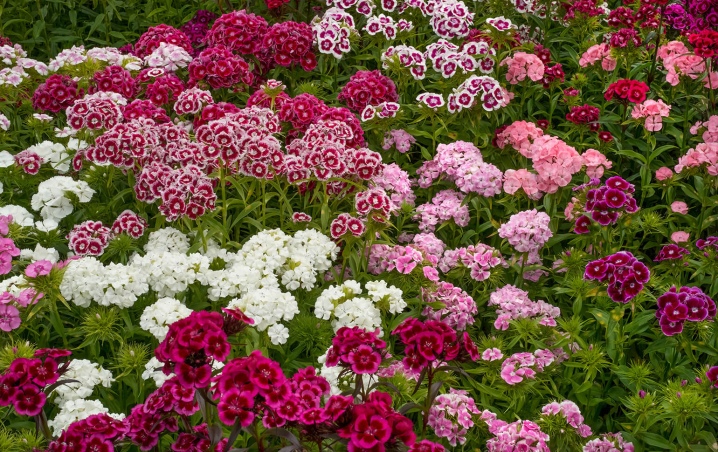
Peculiarities
Carnation (Latin Dianthus, "dianthus") is a herbaceous perennial from the clove family. Can be grown as an annual plant in temperate climates (popular variety of annual "Breath of Love"). The root system of this flower is a kind of rod with modest branches on the sides. The rhizomes penetrate into the soil by no more than 20 cm. Shoots are slightly branched and are usually located in the upper part. In length, they can reach 15-75 cm. They can be placed vertically or lie down. In perennial representatives, the base of the stalk is gradually lignified, due to which a solid and lush subshrub is formed.


Throughout the entire length of the sprouts, thickenings take place at the nodes. Lanceolate or subulate leaves "sit" tightly on the plant stem. They differ in opposite arrangement, grow in pairs. The edges of the leaf blades are both solid and crenate. Their end is sharpened. The foliage surface is smooth, harsh. There is a characteristic pollination of a gray or silvery shade.

Towards the end of the spring season, single large flowers begin to form on the upper sections of the shoots of carnations. (up to 5 cm in diameter). In flowers of decorative varieties, they may differ in group arrangement in intricate umbrellas or shields. At the very base of the flower, you can see a cylindrical calyx with smooth sepals. Above it, flowers bloom, which have 5 petals of noticeable width.


The surface of the petals of carnations is not only smooth, but also corrugated. The cutting depth of the edges also varies. The flowers give off a very pleasant, tart aroma. In the center there are 10 stamens, which barely protrude from the cups, and with them a pair of ovary columns.
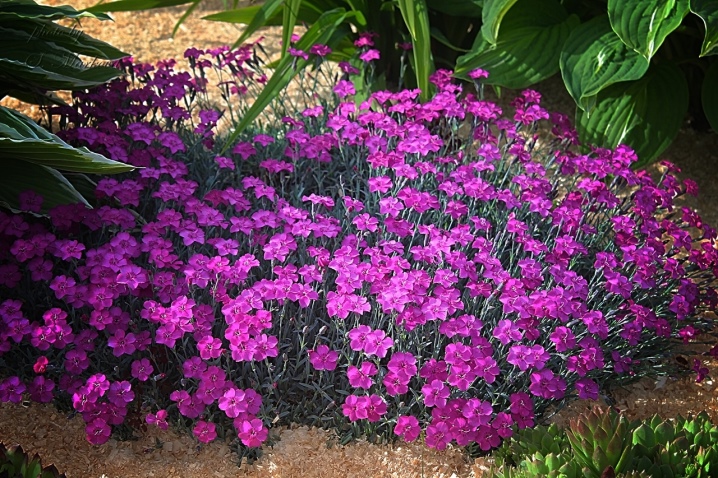
There are such subspecies of carnations that they have not only green, but also purple or orange leaves. As for the natural colors of the plants in question, it is usually made in pinkish and snow-white tones. Cultural representatives of the species are more diverse: they grow creamy, lilac, blue, scarlet and even multicolored.
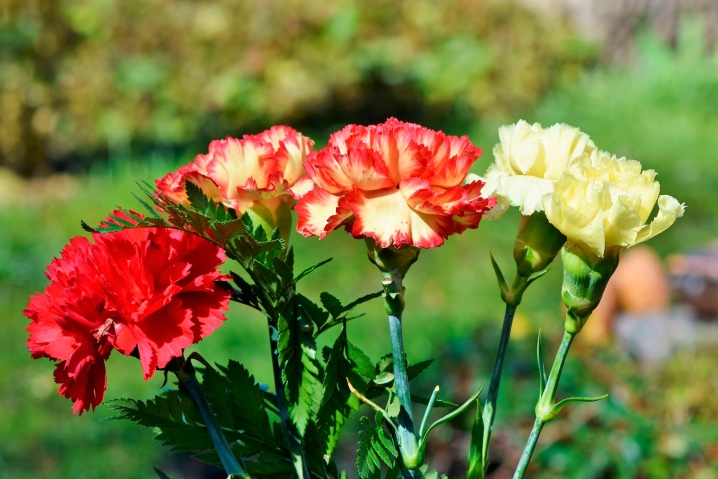
Pollination is carried out by insects. At the end of this stage, the seed pod begins to ripen. In its inner part there are a large number of small flattened seeds with a lumpy dark upper part. When it is finally ripe, the capsule opens 4 doors.
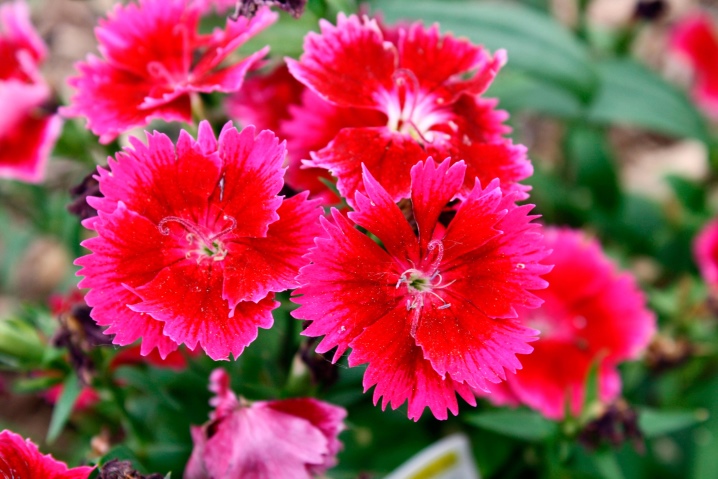
Types and varieties
There are a lot of different types and varieties of carnations. Each representative has its own distinctive qualities, properties and features of appearance. Let's get to know them better.
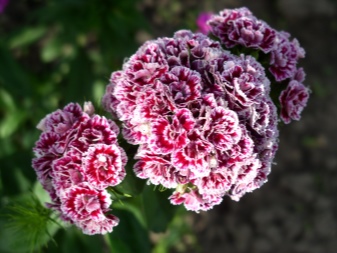
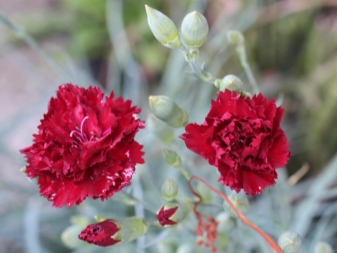
Needle-leaved
The specified plant is a perennial, which has a rod-like root system. Shoots are rich, spreading horizontally. The plant forms pillow-like semi-shrubs with vegetative shoots, the height of which can reach 10-30 cm. In its natural habitat, the needle-leaved beauty normally takes root exclusively in the South Ural lands.
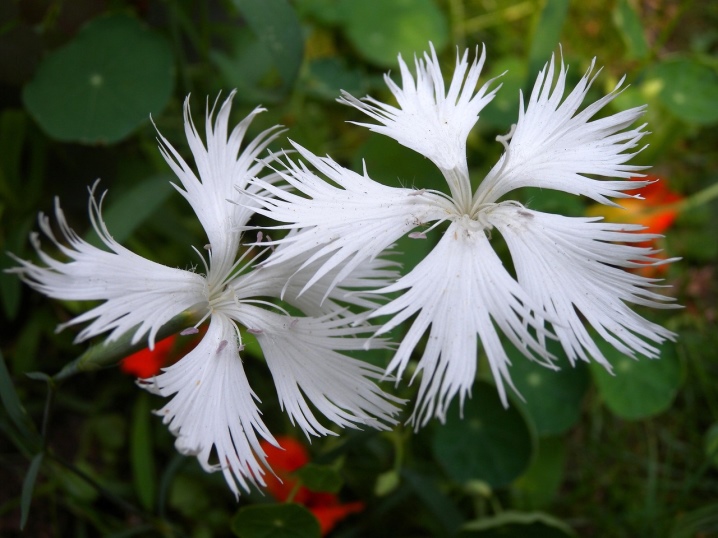
Carnations of this variety are distinguished by rigid sheet plates, which can be up to 30 mm in length. Their average width is only 1 mm. The structure is triangular, narrowed. The flowers grow voluminous and elegant, they consist of 5 petals. White color is characteristic. The buds begin to appear in the 2nd half of May. The flowering stage takes place at the very beginning of June and lasts for 47 days.
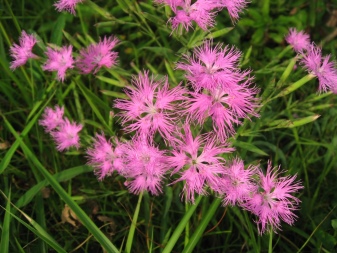
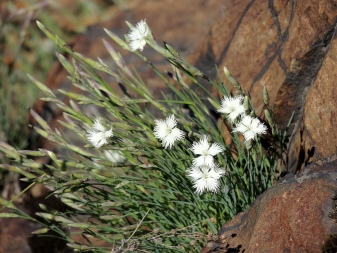
Often, gardeners choose this particular variety of carnations to decorate their plots with spectacular decorations. The popular and popular varieties are considered to be "Baddenia" and Sooty.

Alpine
Plants of this subspecies are recognized as perennials. The height parameter of their stems is usually from 20 to 25 cm.The bushes grow cushion-shaped. Similar carnations grow in the Austrian mountains, Slovenia and Italy. They have elongated leaf plates with a narrow structure and a characteristic gray-green color.

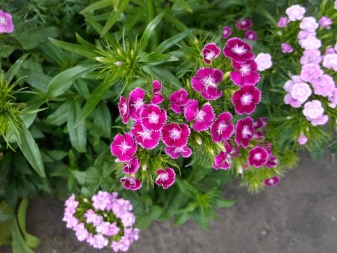
Alpine carnation inflorescences are characterized by large sizes. They are characterized by scarlet-purple, mauve or crimson color. The margins of the petals are covered with small teeth, and the apex is corrugated.
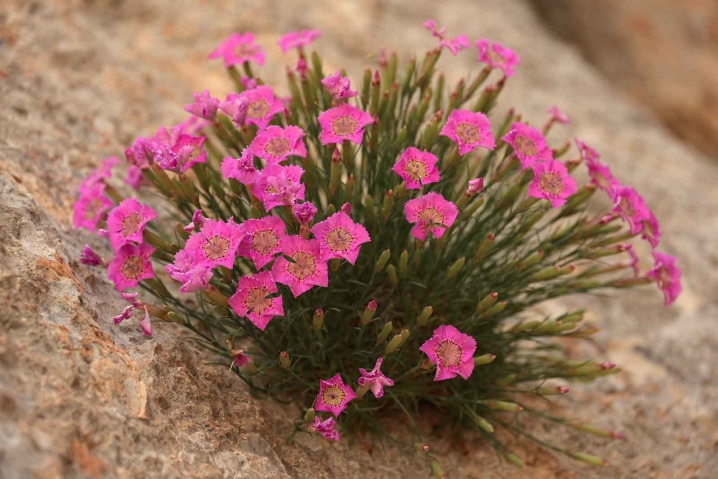
Alpine carnation varieties bloom in June-July. If the flowers grow in the most favorable conditions, then they can bloom again in August. These plants are well suited for both isolated and group plantings. Some of the most relevant and frequently encountered varieties are recognized as Albus, Nefertiti, Alpine Rose.
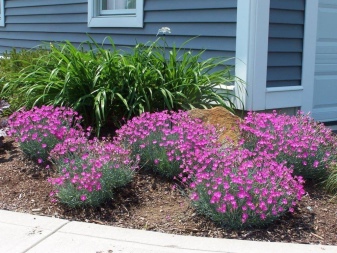

Armeriiform
A kind of herbaceous carnations. The length of the stems is from 10 to 50 cm. In nature, these carnations grow on the edges of the forest. They have elongated green leaves. They are characterized by a curved, lanceolate shape. The length parameter varies from 20 to 106 mm.

The flowers of these representatives are formed by 5 red-pink petals, decorated with snow-white dots. They can be single or arranged in umbellate inflorescences of 2 or 6 elements. The flowering of these pets begins in June and ends with the onset of August. In most cases, these flowers are cultivated as annual, decorative flowers.
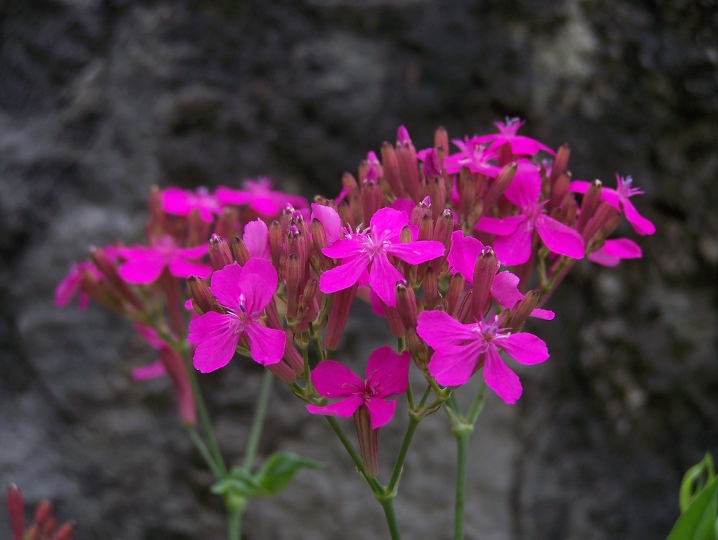
This subspecies does not provide for "purebred" varieties, but there are very popular hybrid representatives - "New York Evening", "Karamelnaya", "Zoryanka".
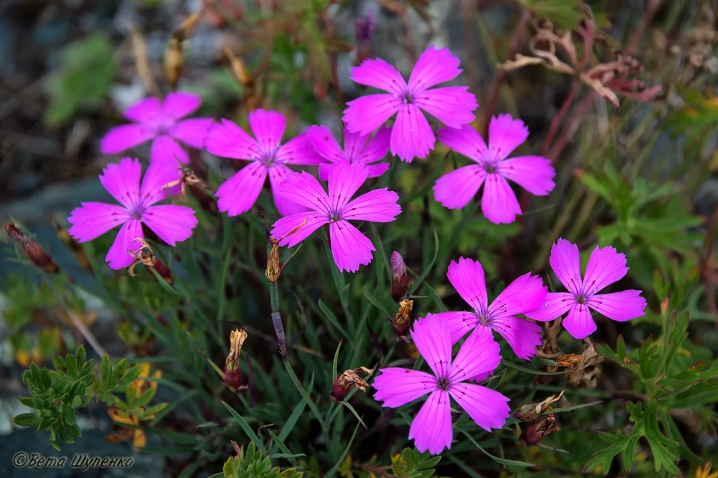
Turkish
Carnations of this subspecies are common and surprisingly common. These are biennial frost-resistant flowers. They can be planted in the garden. They have stems, the height of which can grow to 0.35 or 0.75 m. The leaves are not wide, lanceolate, green, blue-green or reddish-green.
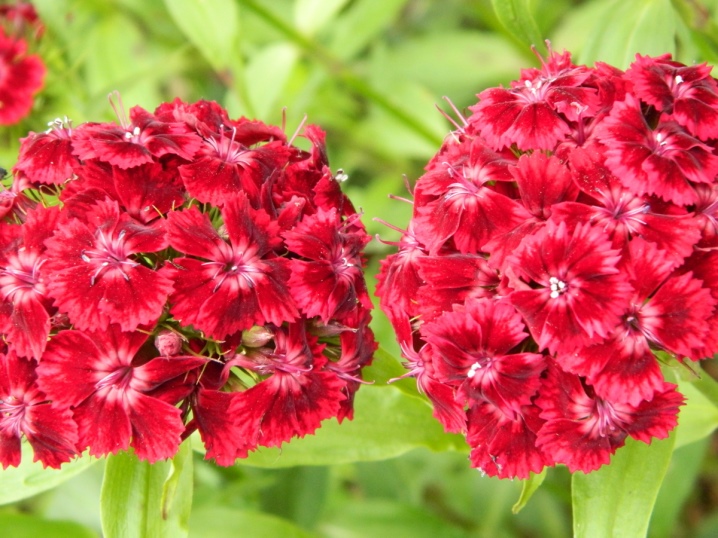
The Turkish beauty is popularly called "bearded", as it is distinguished by the unusual structure of the leaves, covered at the edges with a kind of "cilia". Flowers count in many pieces, exude very delicate and fragrant odors. They can be either simple or terry. They are painted in a variety of colors - from snow-white to red. The inflorescences have a thyroid shape, in diameter they can reach a mark of 12 cm.
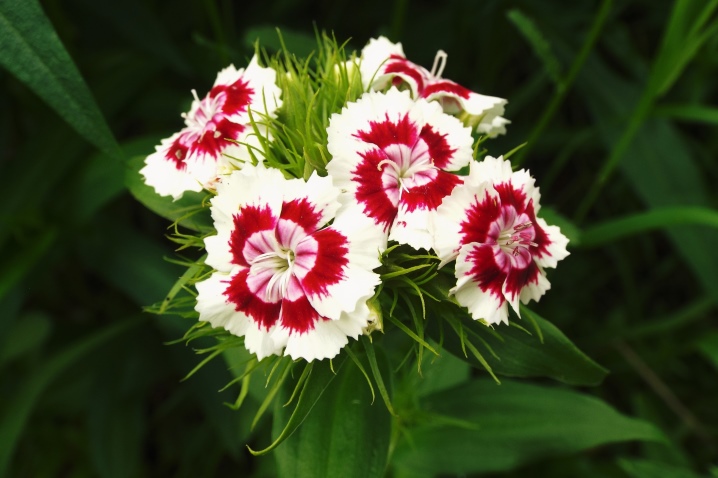
The specified variety is planted for various purposes. She will be able to brighten up not only the garden, but also parks, alleys in the city. Recognized popular are such famous varieties as Newport Pink, Pink Beauty, Scarlet Beauty, Holborn Glory, White Queen, Hollandia.

Shabo
Shrub, garden variety. It is distinguished by well-developed roots, a knotty stem, the height of which can be from 0.3 to 0.6 m. The leaves are narrow, have a gray-green color. Their average length is 12 cm.
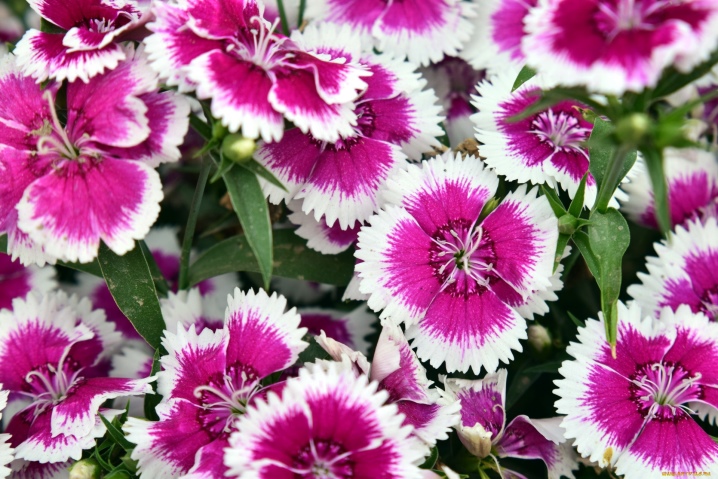
This plant feels great in fertile and drained lands.Flowers grow single, large. There are both terry and semi-double types.
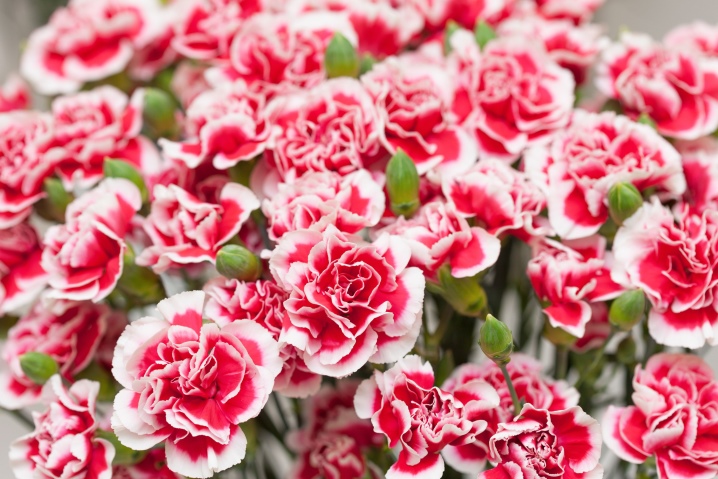
The color of the petals of the representatives of the species under consideration is varied. They can be painted in different shades of white, yellow, red, pinkish or beige. Sprouts are planted not only for the purpose of landscaping flower beds, but also as border decorations. With such additions, the garden or courtyard takes on a livelier and more vibrant appearance.
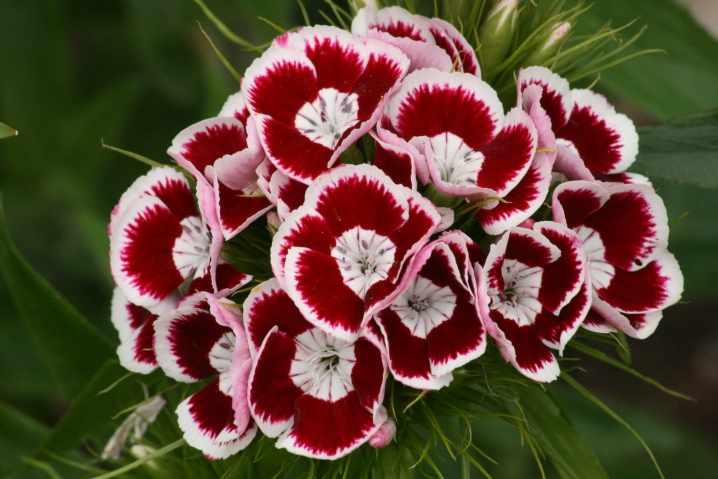
Chinese
Perennial shrub species. Stems are knotty, 15-50 cm long. Leaves are long, narrow, sometimes twisted. In many cases, these flowers are used as a design decoration for landscapes, city alleys and parks.
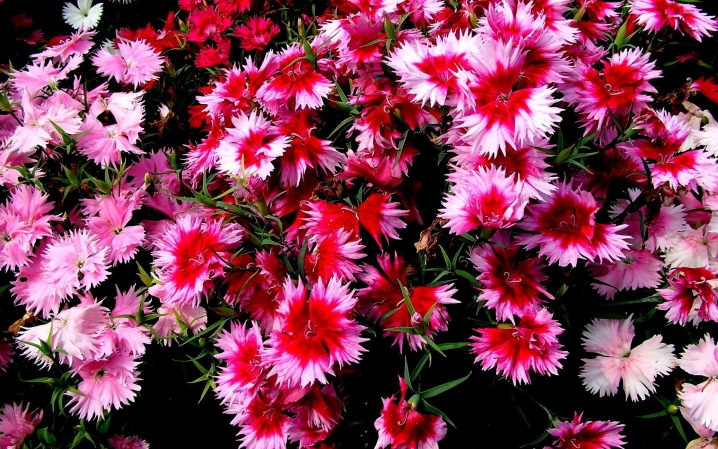
The flowers of Chinese varieties are large, single. Painted in snow-white, dark red or pinkish color. The structure of the flowers can be either ordinary or double. Petal plates are distinguished by rugged marginal areas. They have beautiful edging
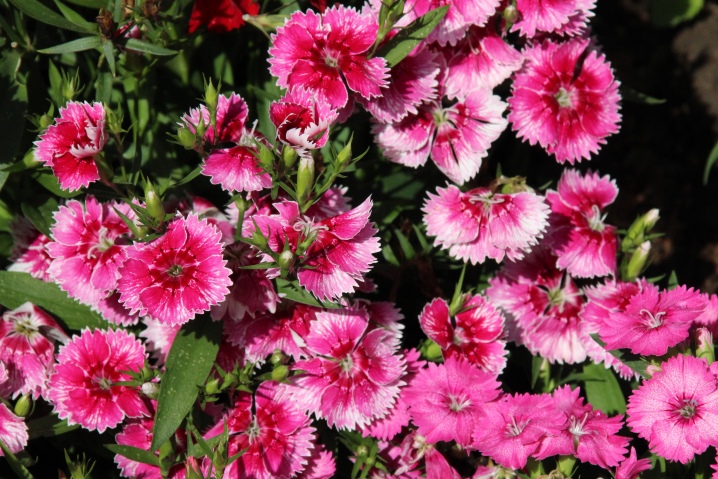
Such varieties of the mentioned representatives of the species as Black and White Minstrels, Snezhana, Imperial, Telstar, Super Parfait, Geddeviga are very beautiful and bright.
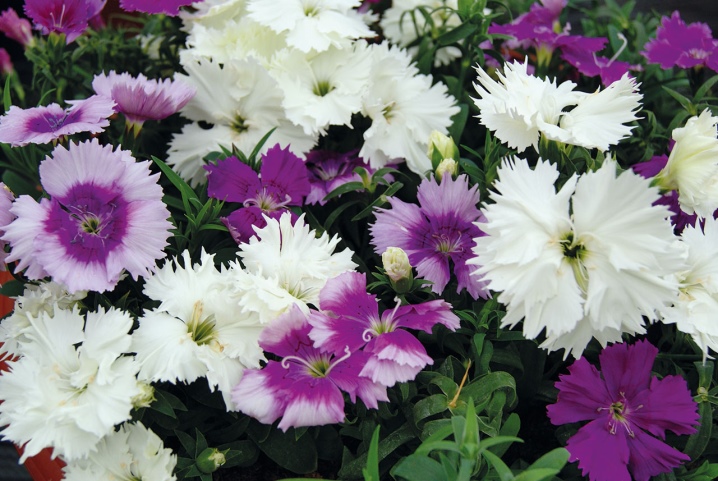
Sizaya
Perennial of low growth, with narrow linear or linear-lanceolate leaf blades. The flower is distinguished by an interesting and unusual shade of foliage - bluish-blue. The stem height level in rare cases is more than 25 cm. The flowers grow double, fluffy, forming small inflorescences of a white, pale pink or carmine shade. Even at the end of flowering, the considered pet does not lose its aesthetic properties due to the coloring of the foliage.
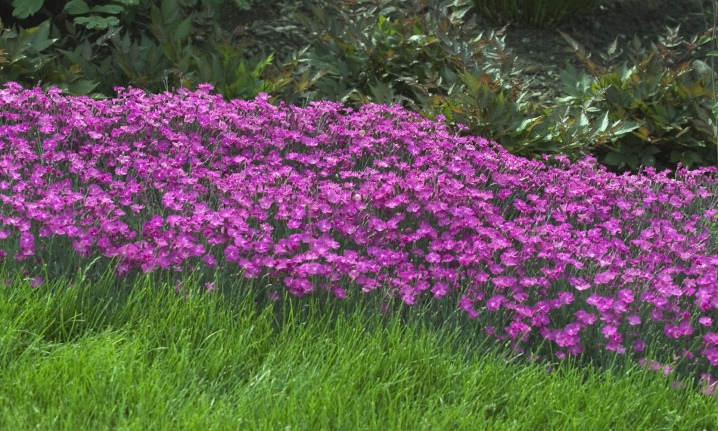
There are many more subspecies of carnations. There are ampelous, creeping, field, long-flowering, herbal ("grass"), Ural, remontant, Kartusian and many other variations. These beautiful plants adorn with enviable frequency both personal plots and city squares, parks or well-groomed alleys.

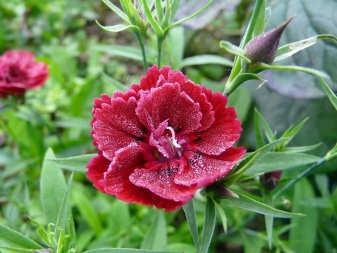
Site selection and soil preparation
Before planting this popular and beautiful looking creature, it needs to find a suitable place and prepare the soil first. It must be borne in mind in which environments the carnation feels as comfortable as possible.
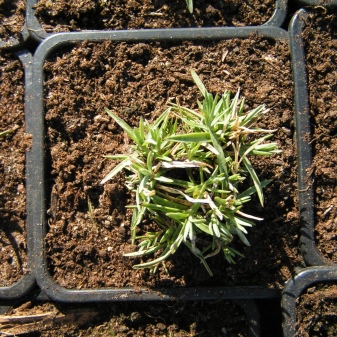
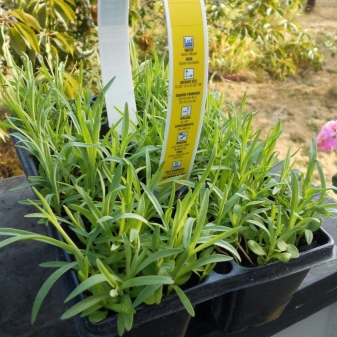
If you have planned to independently plant the flower in question in open ground, then you will need to carefully find a good place on the site. Dianthus are light-loving "pets". They are more comfortable in areas where there is sufficient sunlight. At the same time, there should be no stagnant groundwater in these places. The soil mixture must be light. A neutral acidity level is recommended. Admixtures of sandy loam should be significant.
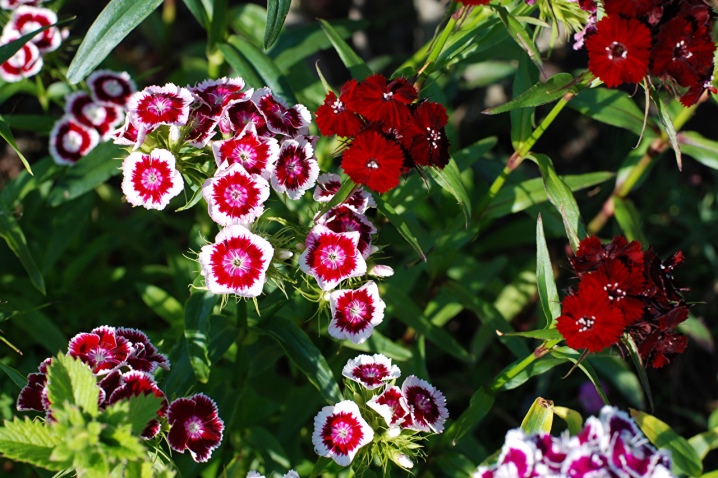
If the soil is harder with a high level of acidity, then peat and dolomite flour can be added to it. Loamy soil is also suitable.

When preparing the beds for planting flowers, it is necessary to form a high-quality drainage layer. It will protect plants from root rot due to high humidity, which carnations cannot tolerate. It is necessary to ensure that there is no stagnation of liquid. If you do not follow this rule, the plant will soon become seriously ill and die.
The place allocated for planting will need to be thoroughly and thoroughly dug up, and then high-quality complex fertilizers can be added there (you can buy ready-made products, or you can prepare them yourself).
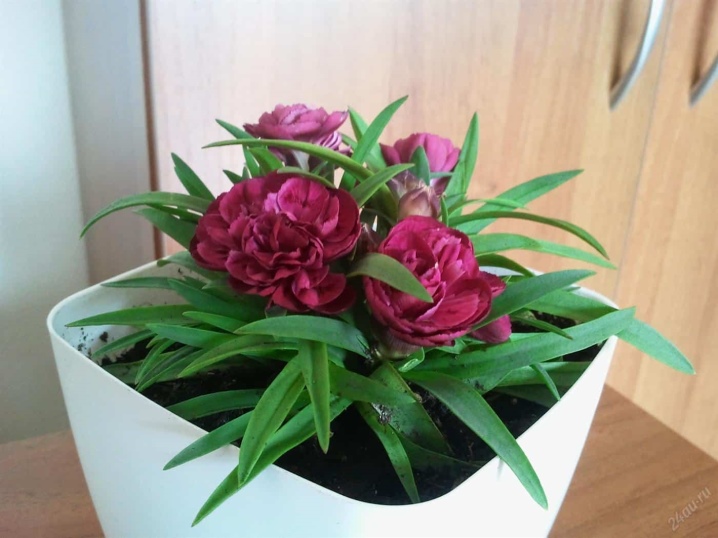
How to plant?
Having chosen and prepared a suitable place, it is permissible to proceed to direct landing. This procedure largely depends on the specific variety of plants selected. Seedling carnations usually move into open ground in the form of seedlings in early May. If we are talking about annual varieties, then they can be sown in the form of seeds.
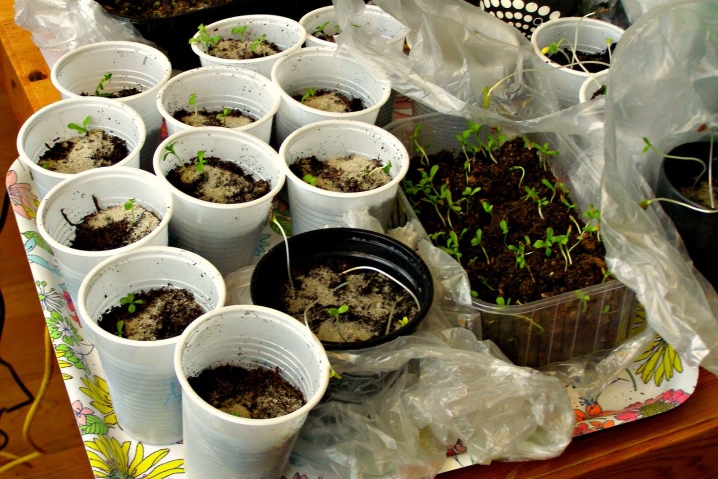
The process of planting carnations consists of several stages.
- If you are sowing seeds in open ground, then this should be done in May, when the ground finally thaws and the danger of frost has passed.
- Small grooves must be made on the bed prepared in advance. Depth up to 0.3 cm is sufficient.
- Next, they need to be thoroughly moistened.
- If, when cultivating the land, no fertilizing was added to it, then they must be added during planting. It is better to use complex mineral formulations, but fresh manure will not work.
- Now you can sow the seeds carefully. It is not worth sowing them too thickly.
- Cover the grooves with soil.
- Seedlings will appear in 2-3 weeks. They will be very fragile and vulnerable, they will need competent care, compulsory shelter for the winter.
- If you are planting grown seedlings, then in the garden you will need to make small holes for planting. There should be about 20 cm between the seedlings, as well as between the beds.
- Before planting, it is required to lay out a drainage layer in the holes, especially if you are planting representatives of perennial varieties. Carnations do not tolerate moisture stagnation at the rhizomes. In the role of drainage, it is allowed to use gravel or small pebbles.
- Carnations planted this way will bloom the same year.
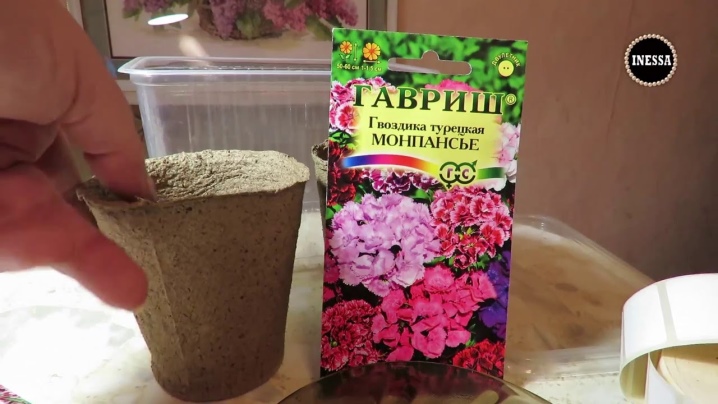
How to take care of it properly?
It is not enough to plant carnations correctly, it is also important to properly care for them. Only good care will allow you to grow healthy and beautiful plants. None of the following procedures should be neglected.
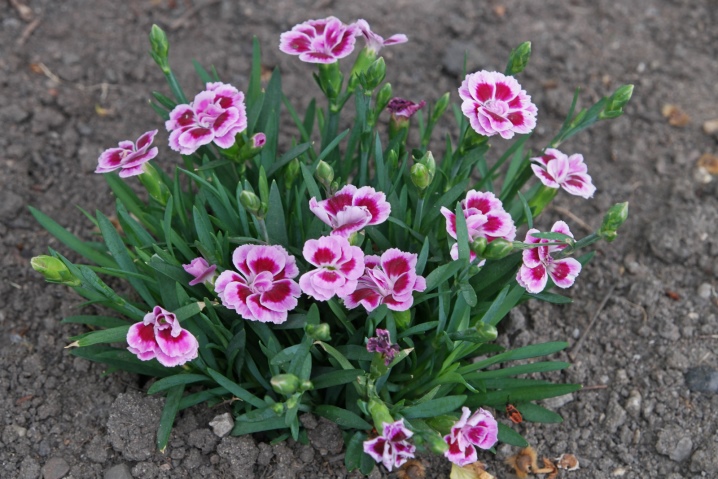
Loosening
Delicate carnations thrive in light and loose soils. You should always be careful to ensure that no dried crust appears around the plants. It is better to loosen the soil the next day after watering. This procedure should be done as carefully and carefully as possible so as not to harm the flower stalks. During loosening, it is required to remove the formed weeds, since they can adversely affect the growth and development of carnations, especially when it comes to young seedlings.

Watering
Carnations react very poorly to long stagnation of liquid at the roots, so watering them should be moderate, but frequent. A good guide is the soil around the flowers. Try not to bring it to the point when the ground is completely dry. There is a good solution - water the plants less often, but with large volumes of water. During watering, it is important to ensure that the liquid does not get on the buds - this way you can seriously harm the green pet.

Pruning and supporting
Experienced growers advise to cut the buds after they bloom, and sometimes cut the shoots with them (by 10-15 cm). These actions will stimulate the formation of fresh shoots and the blooming of new flowers. It is also permissible to pinch the bushes to enhance their branching.

Tall bushes during the flowering period must be carefully tied up - fragile stems risk breaking under the weight of the inflorescences.
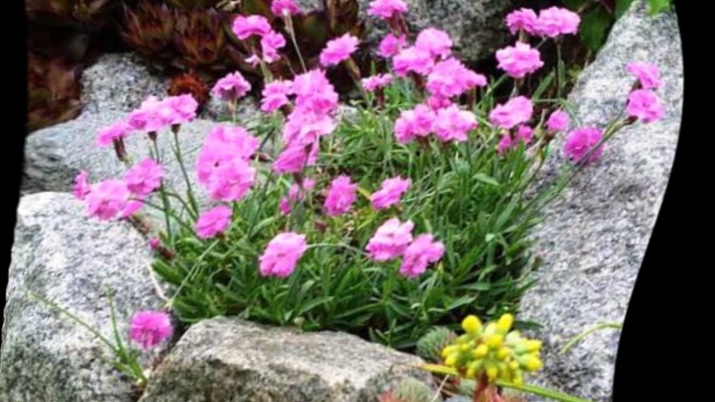
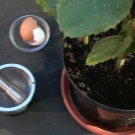
Fertilizer
Carnations should not be fertilized with fresh manure. Due to such dressings, flowers often die. It is better to use rotted fertilizer. It must be introduced to a depth of no more than 15-20 cm, mixed with earth. All varieties of carnations respond positively to the addition of complex mineral dressings.
Carnations need adequate amounts of nitrogen, potassium, and phosphorus. The first feeding should be added 3-4 weeks after planting. The final addition of fertilizers should be done in the middle of autumn. At this time, potash components will be relevant.
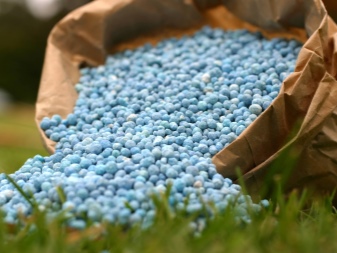

Wintering
Some of the varieties of carnations are sensitive to sudden temperature changes. This is especially true for the spring season, so it is recommended to cover young flowers in autumn with spruce branches and remove them only after the frost stops.
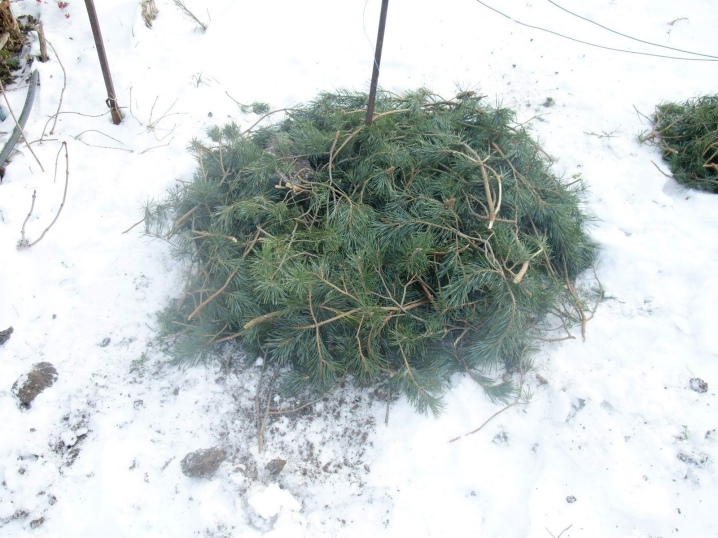
For the winter, plantings are also insulated with specialized covering materials. Remove protective coatings in April or May.

Growing at home
Carnation, which is grown in a pot, does not require special conditions of keeping. Even a novice florist can grow a flower in such conditions.

Let's take a closer look at how to properly grow a carnation at home.
- Lighting. The flower will need sufficient lighting. It is advisable to place the pot on the east, south, southeast side. In autumn and winter, when the days are shortening, flowers must be provided with additional lighting, at least sometimes.
- Temperature. The best temperature indicators for home carnations are + 20 ... 25 degrees Celsius. But flowers will tolerate light coolness normally (+ 15 ... 20 degrees), as well as heat (+ 30 ... 35 degrees).
- Soil mixture. Carnations need sandy or sandy loam soil, and the Chinese varieties grow well in clay substrates. The soil mixture can be prepared on your own by introducing organic components into the ground - humus, turf, peat, wood ash. Mineral ingredients are also suitable. You can buy a high-quality, ready-made universal mixture in the store.
- Watering. Like garden flowers, indoor carnations do not tolerate moisture overload. They need to be watered as the earth dries up. Do not spray pets with liquid.
- Top dressing. Indoor varieties need to be fed. The first additions are required when the plant stems grow to 9-10 cm. The second dressings are needed when the first buds are formed on them.

Avoid placing indoor stud pots in the bathroom or any other room with high humidity. The flower in question tolerates such conditions very poorly.
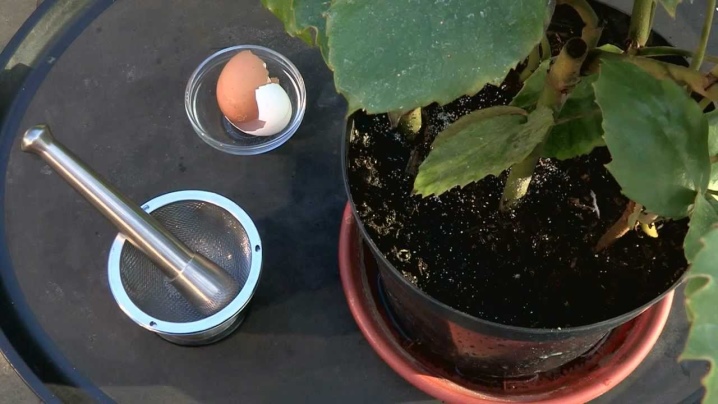
Reproduction methods
There are several ways you can propagate a carnation.
- Seeds. This method is relevant for any variety of carnations.
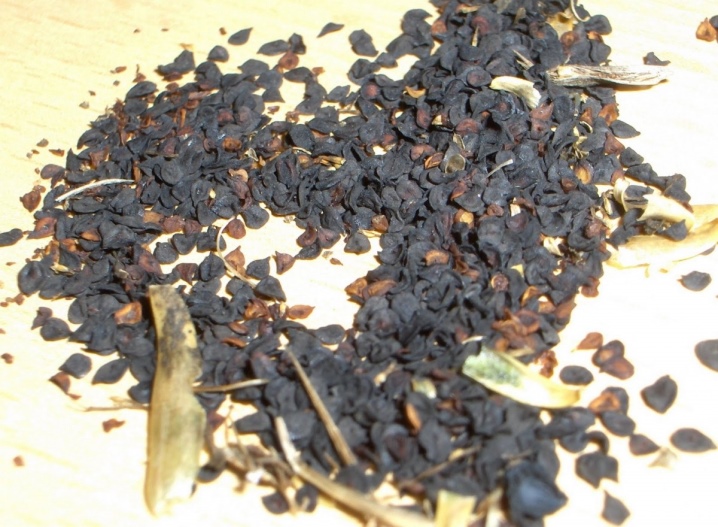
- By division. Method suitable for shallow root flowers. Held in early spring. To do this, a bush is dug out, the earth is shaken off the roots, and damaged elements are removed. Next, a bush is cut with a knife so that there are 2-3 sockets on each part. Delenki are planted in the ground and watered.
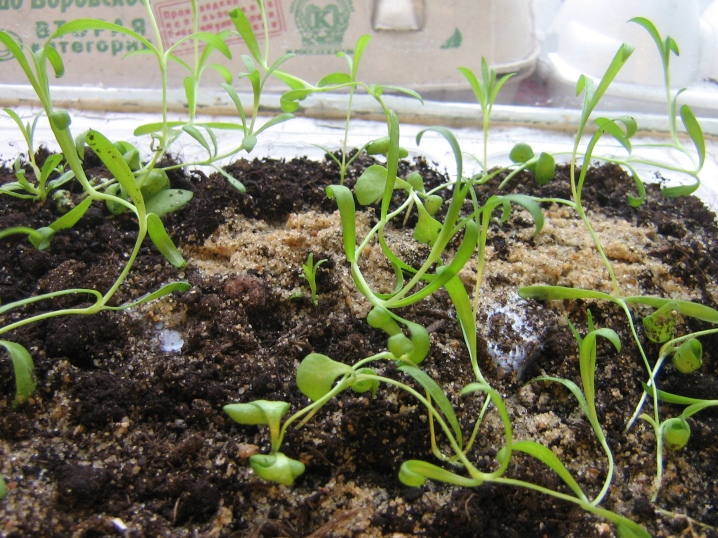
- Cuttings. Cutting cloves is recommended in the last days of May. Cuttings (optimal length - 5-6 cm) are cut from young shoots and without peduncles. With a knife, split the stalk of the cutting between the lower and middle node. Planting material should be applied to wet but clean river sand or perlite. The twigs are covered with a jar or plastic bottle. Roots will form within 20-25 days, after which the seedlings can be transplanted.
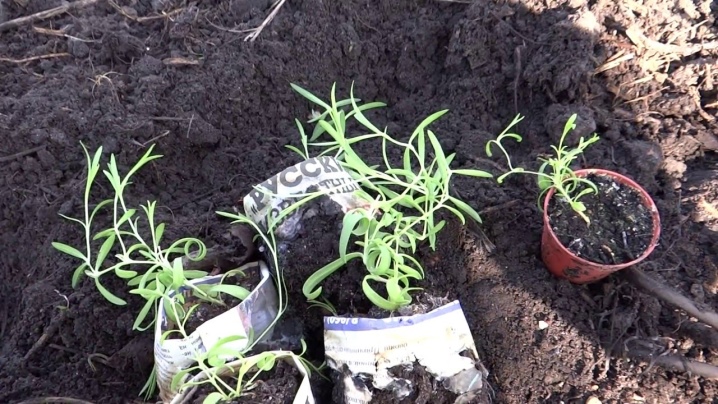
- Layers. Suitable for flowers with long shoots. In the summer, 1-3 young shoots are chosen. Closer to the roots, an incision is made on the stem. With an incision down, the shoot is pressed against the soil, fixing it with a hairpin. The place must be covered with clean sand. Need regular watering. Roots will appear on the shoot within a month. The seedling can be separated from the main bush and transplanted.
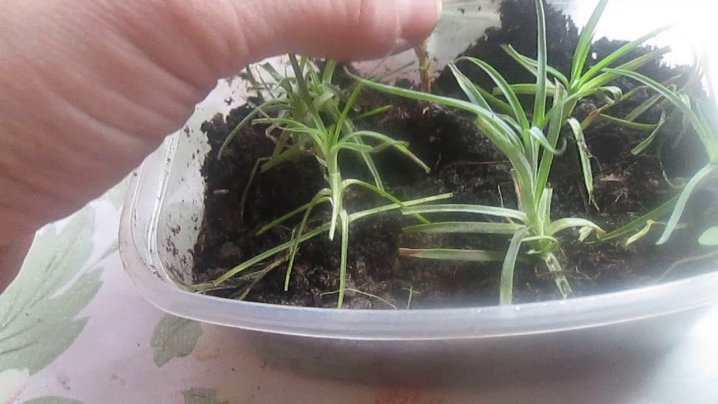
Diseases and pests
Carnation, like any other plant, is subject to pest attacks and a number of diseases.
- Phialophorosis. A disease due to which the stems inevitably wilt and turn yellow. Some leaves and shoots run the risk of becoming reddish in color. If such an ailment appears, it is required to remove diseased bushes, to process the land with a solution of potassium permanganate. Healthy flowers should be sprayed with Topsin for prophylaxis.
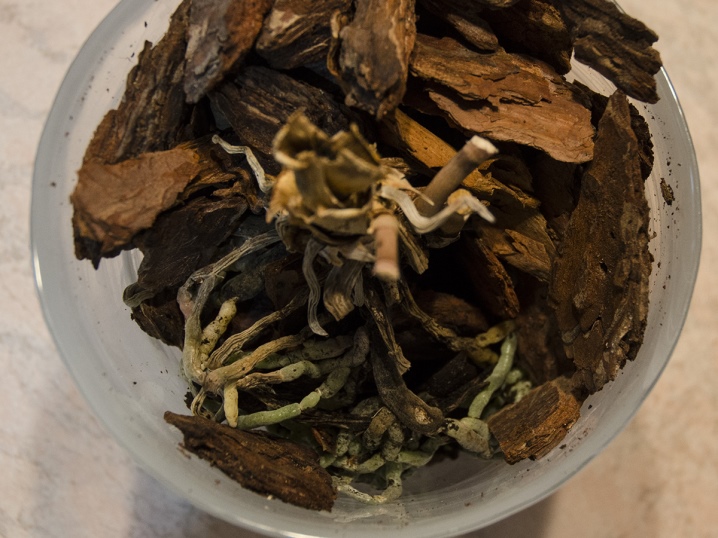
- Fusarium wilting. Symptoms of the disease: first yellow, and then brown and fading leaf plates. On the aboveground surfaces of the bush, pinkish and convex spots (mushroom spores) are formed. The diseased flower must be removed, and the rest of the plants must be treated with fungicides.
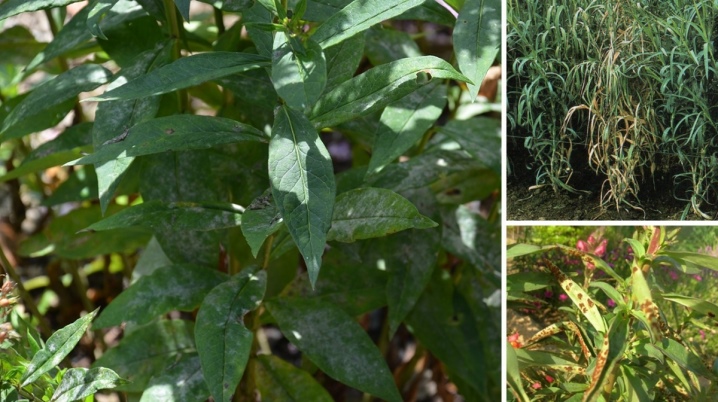
- Thrips. Pests that feed on plant juices. Because of this, the flower begins to deform, becomes covered with a whitish bloom, and loses its beautiful appearance. If the plant is damaged too badly, it will need to be removed as soon as possible.If the flower is slightly affected, then it must be treated with special means - insecticides. Arrivo or Zolon will do. Spraying the plant should be carried out 3-4 times every 5 days.
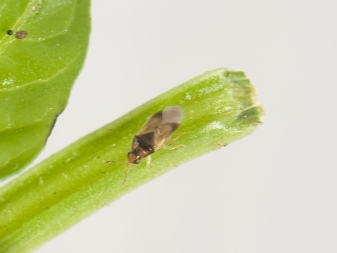

- Gall nematode. A dangerous pest that infects carnation roots and forms swelling-galls on them. Because of this, the plant ceases to grow normally, the leaf plates begin to change color to yellow, the flowers fall off. Diseased bushes will need to be removed and burned without fail. Since the pest is able to stay in the buds for years, the soil should be doused with boiling water, after which it should be treated 3-4 times with Aktara or Rogora solutions.
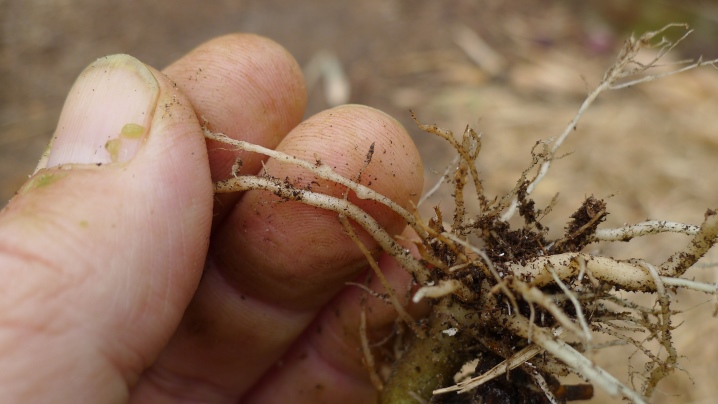
- Rhizoctonia. A disease that leads to rotting of the bush at the root collar. As a result, the necessary nutrients and moisture cease to flow to the flower. The cloves turn yellow and dry out. Most likely, it will not be possible to save a diseased plant, but for preventive purposes, the flower must be watered and sprayed with Bordeaux liquid.

- Caterpillars scoop. Dangerous parasites that attack carnations at the stage of their budding. Pests of this kind feed on the foliage of flowers and flowers that have not yet bloomed. More impressive populations are able to "eat" the landing in just one night. Since the caterpillars go “hunting” at dusk, during this time period they can be destroyed mechanically or the bush can be pretreated with effective means like “Actellika” or “Fitoverma”.
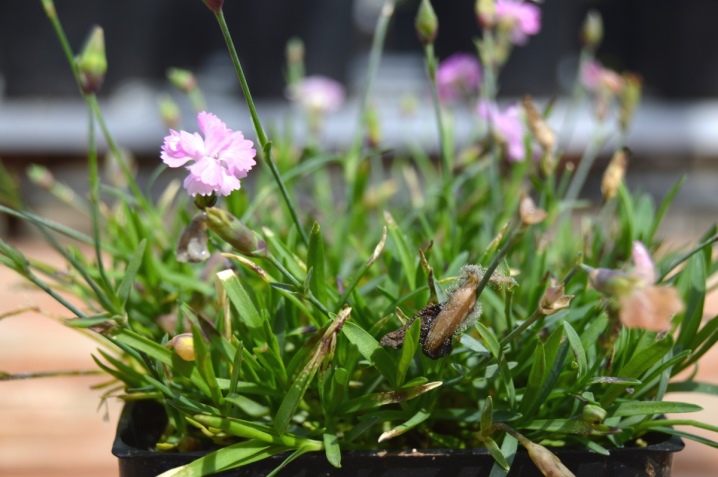
Use in landscape design
Carnation is often chosen for the purpose of decorating a garden or house area. These flowers can look very impressive when combined with other plants. It can be flowers of neutral shades - they are in great harmony with variegated colors.
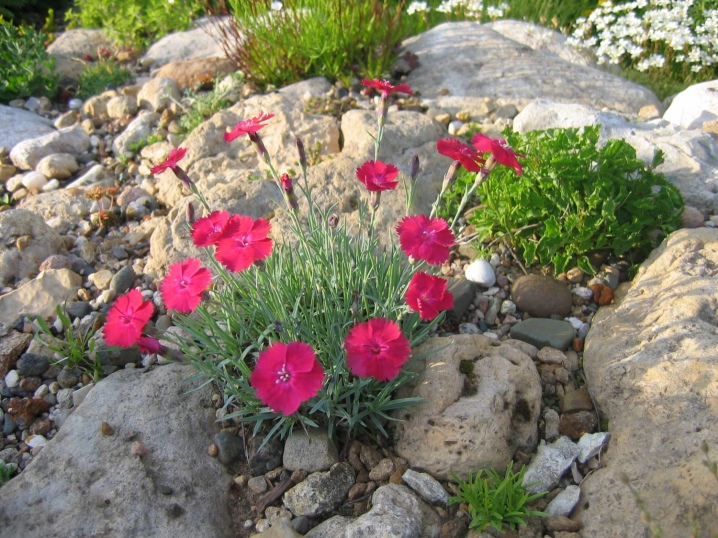
Carnations planted with neighbors under the name:
- bicolor rosewood;
- yarrow;
- gypsophila;
- cochia.
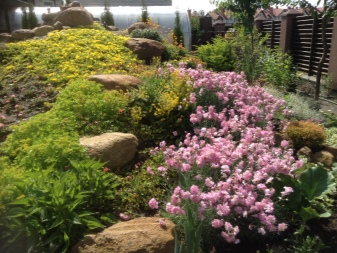
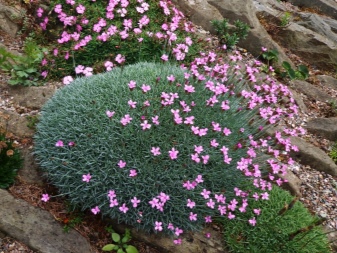
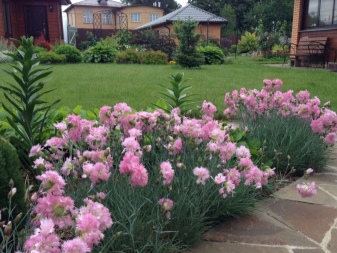

Carnations can be planted in single or multi-colored groups. They look gorgeous in beautiful flower beds, interestingly arranged in the garden or on the site. Such plants will be able to decorate well the area in front of the house. Carnations are great as decorative curbs. They are often complemented by paths and paths on the site.
You can learn more about the varieties of cloves in the video.

































































































The comment was sent successfully.